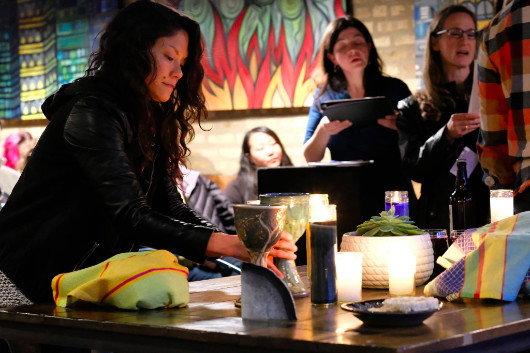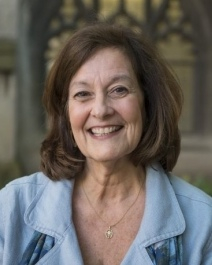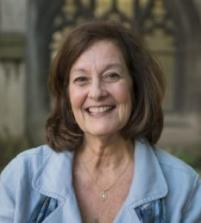Where the Millennials Are
In his Sightings column published on Monday, December 11, Martin Marty invites readers to attend to the “movements in the hearts” of millennials, rather than settling for obvious interpretations about their reputed absence from our pews: “Hard news about this cohort is on the front page of newspapers and gets prime time coverage in other media … But less trumpeted are revealing comments which should not be neglected.” He notes and footnotes a few of the countless essays, articles, studies, and books that offer insight into the millennial heart, in response to that too-familiar ecclesial complaint: where are the millennials, why aren’t they in church, and what do they want instead? Marty’s column put me in mind of a church service I had attended the night before, the gathering of a one-year-old congregation in the Rogers Park neighborhood of Chicago
 In his Sightings column published on Monday, December 11, Martin Marty invites readers to attend to the “movements in the hearts” of millennials, rather than settling for obvious interpretations about their reputed absence from our pews: “Hard news about this cohort is on the front page of newspapers and gets prime time coverage in other media … But less trumpeted are revealing comments which should not be neglected.” He notes and footnotes a few of the countless essays, articles, studies, and books that offer insight into the millennial heart, in response to that too-familiar ecclesial complaint: where are the millennials, why aren’t they in church, and what do they want instead?
In his Sightings column published on Monday, December 11, Martin Marty invites readers to attend to the “movements in the hearts” of millennials, rather than settling for obvious interpretations about their reputed absence from our pews: “Hard news about this cohort is on the front page of newspapers and gets prime time coverage in other media … But less trumpeted are revealing comments which should not be neglected.” He notes and footnotes a few of the countless essays, articles, studies, and books that offer insight into the millennial heart, in response to that too-familiar ecclesial complaint: where are the millennials, why aren’t they in church, and what do they want instead?
Marty’s column put me in mind of a church service I had attended the night before, the gathering of a one-year-old congregation in the Rogers Park neighborhood of Chicago. The pastors of this congregation are on the millennial cusp—just a bit beyond the 17-35 year old cohort the label denotes. I was visiting, as I often do in all sorts of congregations throughout the Chicago area, to hear the church’s intern—one of our students, herself a millennial—preach her first sermon there. Around fifty folks had gathered that evening in a simple, snug bar near the CTA’s Red Line. The leaders and musicians conducted the service from a small stage on the far side of the room; a few Christmas lights and some artwork warmed the space. Worshippers perched on folding chairs and barstools, and clustered around small cocktail tables, singing along to an eclectic mix of old hymns and pop/rock lyrics. At a craft table in the back of the room a gaggle of young children presided over the familiar sacrament of glitter and glue. The elements of the service itself were typical Protestant fare: music, poetry, scripture, sermon, prayer, testimony, offering, eucharist, and blessing, with announcements of potlucks and programs to come. On this particular evening, the scripture reading was predictable also: the story of the annunciation, from Luke’s gospel, was the same text that had been read in Christian congregations all over the city that morning.
Two things distinguished this gathering from the more established Protestant service I’d attended in my own neighborhood earlier that day: the fact that I was one of three non-millennials in the room, and the congregation’s bracing, “no-holds-barred” treatment of the mystery of the incarnation. This is a story-telling church, meaning that the “testimonies” before the sermon are personal narratives crafted by the tellers themselves, people who may or may not be congregants. That evening’s testimonies were all about pregnancies—real, unvarnished, unsentimental ones. There were infants born to teenage mothers, adoptions, abortions, and surrogacies; congregants recounted all manner of embodied experiences, both broken and blessed. The sermon interrogated the angel Gabriel about his encounter with Mary, the ancient narrative interwoven with the preacher’s story about offering pastoral care to pregnant detainees at Cook County Jail. The sharing of the peace was heartfelt, the eucharist was as joyful as any I’ve seen, and after the benediction (using the same words and gestures that have been blessing congregations for millennia) people mingled with sodas and beer, sharing greetings, hugs, encouragement, and laughter—standard coffee hour fare among congregations everywhere.
While this Rogers Park congregation may be remarkable, it is not unusual. Just the week before, I had visited another such congregation, to hear another student speak to a gathering of fifty folks on a Sunday morning in a light, open, rented space in Woodlawn. Again, the rubric would have been familiar to Protestant church-goers everywhere: acoustic music led by a small band, voices singing, children dancing in the aisles, poetry, scripture, testimony, sermon, prayer, eucharist, and blessing. Everybody enjoyed a home-cooked meal together after the service, as is the custom here every week. And yet again, what marked the gathering as different from those congregations who ask “where the millennials are” were the culture of intentional inclusivity (worshippers include their gender pronouns on their name tags, and there were several LGBTQ persons and families engaged in leading the service); a commitment to truth-telling in sermons, testimonies, and prayers; and the fact that I was the oldest person in the room, save one or two. Millennials were leading this congregation as well. In fact, according to one mainline denomination, nearly a third of all new churches are led by this age cohort. Many more millennial pastors are engaged in the difficult work of helping established congregations re-imagine their ministries in response to our current moment: moving from nineteenth-century buildings to accessible storefronts; building multiracial, multiethnic communities; re-engaging their neighborhoods with creativity, love, and justice.
Nor are Christian congregations the only places to find millennials engaged in lively communities or innovative spiritual practice in Chicago. Mishkan, “a spiritual community reclaiming Judaism’s inspiration and transformative essence,” has been meeting for “soulful musical prayer” in synagogues, homes, event venues, and other religiously unconventional spaces all around the city since 2011 and now retains a staff of six millennial leaders. Bodhi Spiritual Center was begun over a decade ago and now counts over 700 participants, offering celebration services and meditation, workshops, and small groups, for the “spiritual but not religious.” What these communities—Christian, Jewish, non-affiliated—all have in common, it seems, is a deep respect for the wisdom of their traditions, an appreciation for the power of community, and the willingness to engage people—especially the disenchanted, disillusioned, or disenfranchised—in the venues and the vernacular of those who need and welcome these gifts. Their young leaders dare to embrace deep spirituality and costly community, and their hearts incline to the many in their own generation and others whose testimonies have not been welcome and whose lives have not been celebrated by other communities of faith.
To see millennials at worship, and at work, we need only show up where they are, instead of insisting that they come to us.
Resources
- Amlin, Vince. “A Church that Believes Your Stories Are Sacred.” Sightings. June 29, 2017.
- Marty, Martin E. “The Hearts of Millennials.” Sightings. December 11, 2017.
Photo Credit: Gilead Church Chicago
 Author, Cynthia Lindner (DMin’99), is Director of Ministry Studies and Clinical Faculty for Preaching and Pastoral Care at the University of Chicago Divinity School. Author, Cynthia Lindner (DMin’99), is Director of Ministry Studies and Clinical Faculty for Preaching and Pastoral Care at the University of Chicago Divinity School. |
Sightings is edited by Brett Colasacco (AB’07, MDiv’10), a PhD candidate in Religion, Literature, and Visual Culture at the University of Chicago Divinity School. Sign up here to receive Sightings via email. You can also follow us on Facebook and Twitter.


